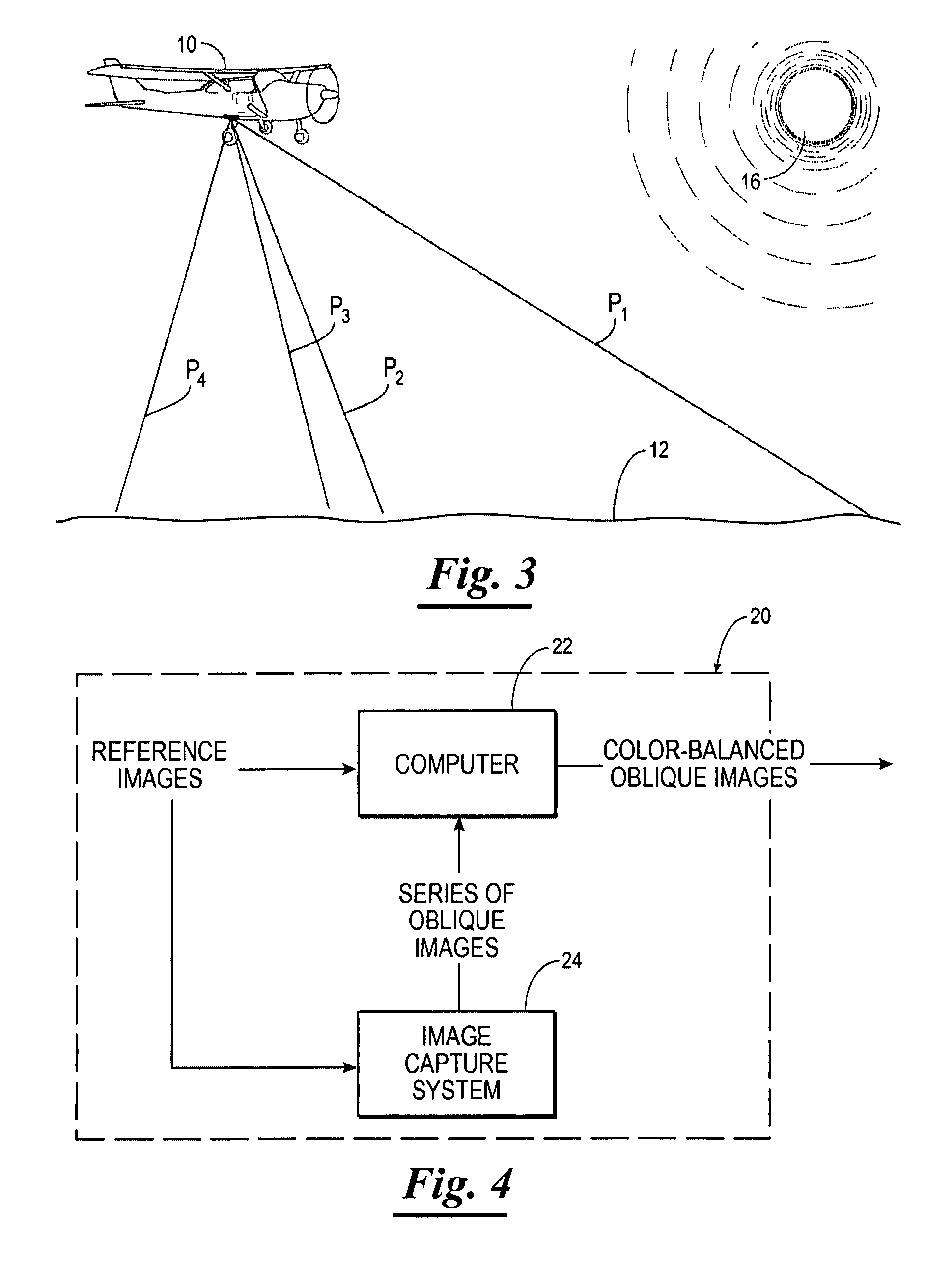System and process for color-balancing a series of oblique images
a color-balancing and oblique image technology, applied in image enhancement, image analysis, texturing/coloring, etc., can solve the problems of oblique aerial image capture additional challenges, color-balancing oblique aerial images presents unique challenges, and differences can be very noticeable and distract from the overall image appearan
- Summary
- Abstract
- Description
- Claims
- Application Information
AI Technical Summary
Benefits of technology
Problems solved by technology
Method used
Image
Examples
Embodiment Construction
Before explaining at least one embodiment of the invention in detail, it is to be understood that the invention is not limited in its application to the details of construction, experiments, exemplary data, and / or the arrangement of the components set forth in the following description or illustrated in the drawings. The invention is capable of other embodiments or of being practiced or carried out in various ways. Also, it is to be understood that the phraseology and terminology employed herein is for purpose of description and should not be regarded as limiting.
The processes described in this patent provide a means for color balancing oblique images so that they take on a consistent color tone. The principal behind these processes is to select a set of color-balanced images to use as reference images to create color-balance transformations for a series of oblique images so that the resulting color-balanced oblique images will have a color tone similar to the reference images. Beca...
PUM
 Login to View More
Login to View More Abstract
Description
Claims
Application Information
 Login to View More
Login to View More - R&D
- Intellectual Property
- Life Sciences
- Materials
- Tech Scout
- Unparalleled Data Quality
- Higher Quality Content
- 60% Fewer Hallucinations
Browse by: Latest US Patents, China's latest patents, Technical Efficacy Thesaurus, Application Domain, Technology Topic, Popular Technical Reports.
© 2025 PatSnap. All rights reserved.Legal|Privacy policy|Modern Slavery Act Transparency Statement|Sitemap|About US| Contact US: help@patsnap.com



